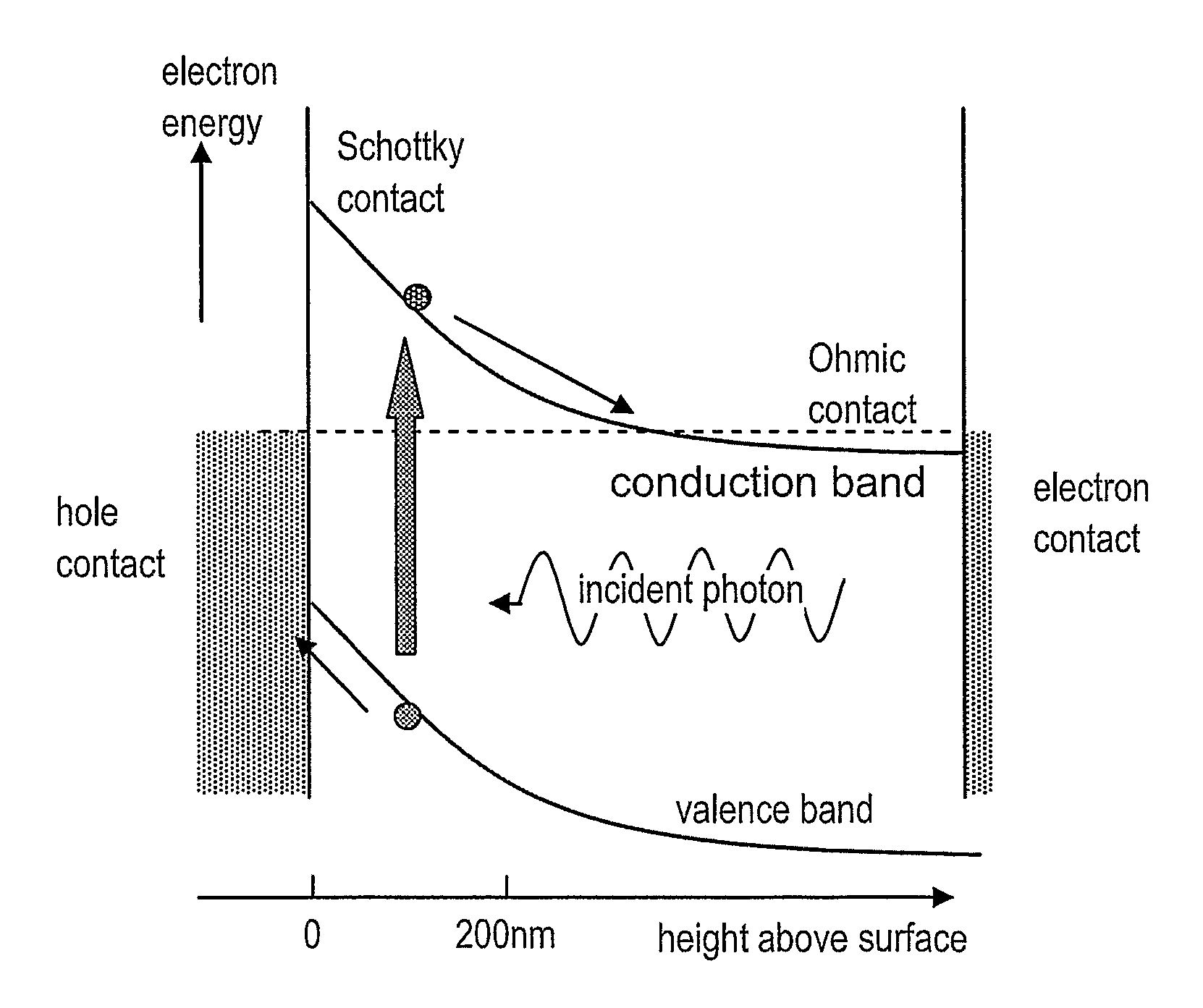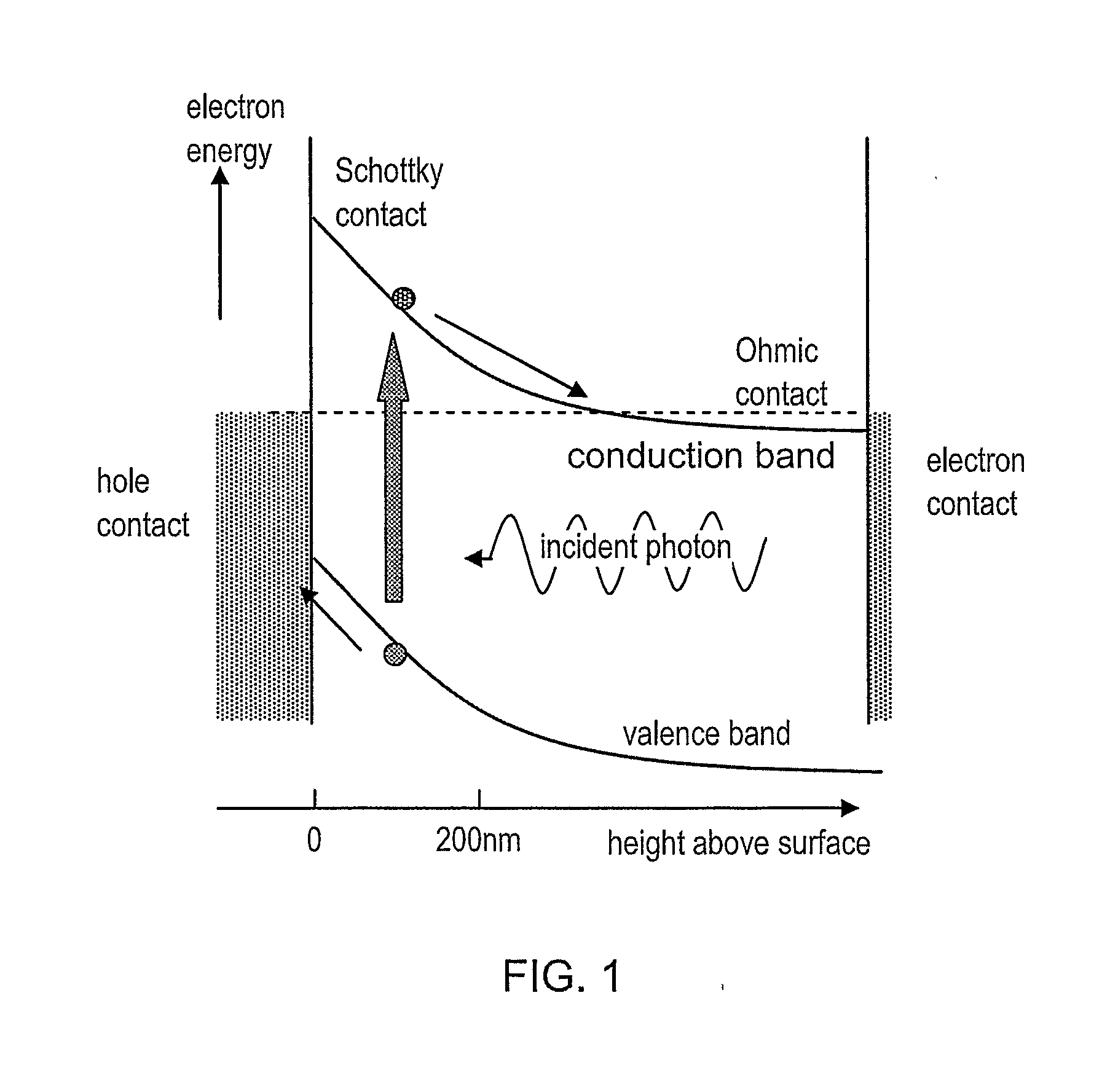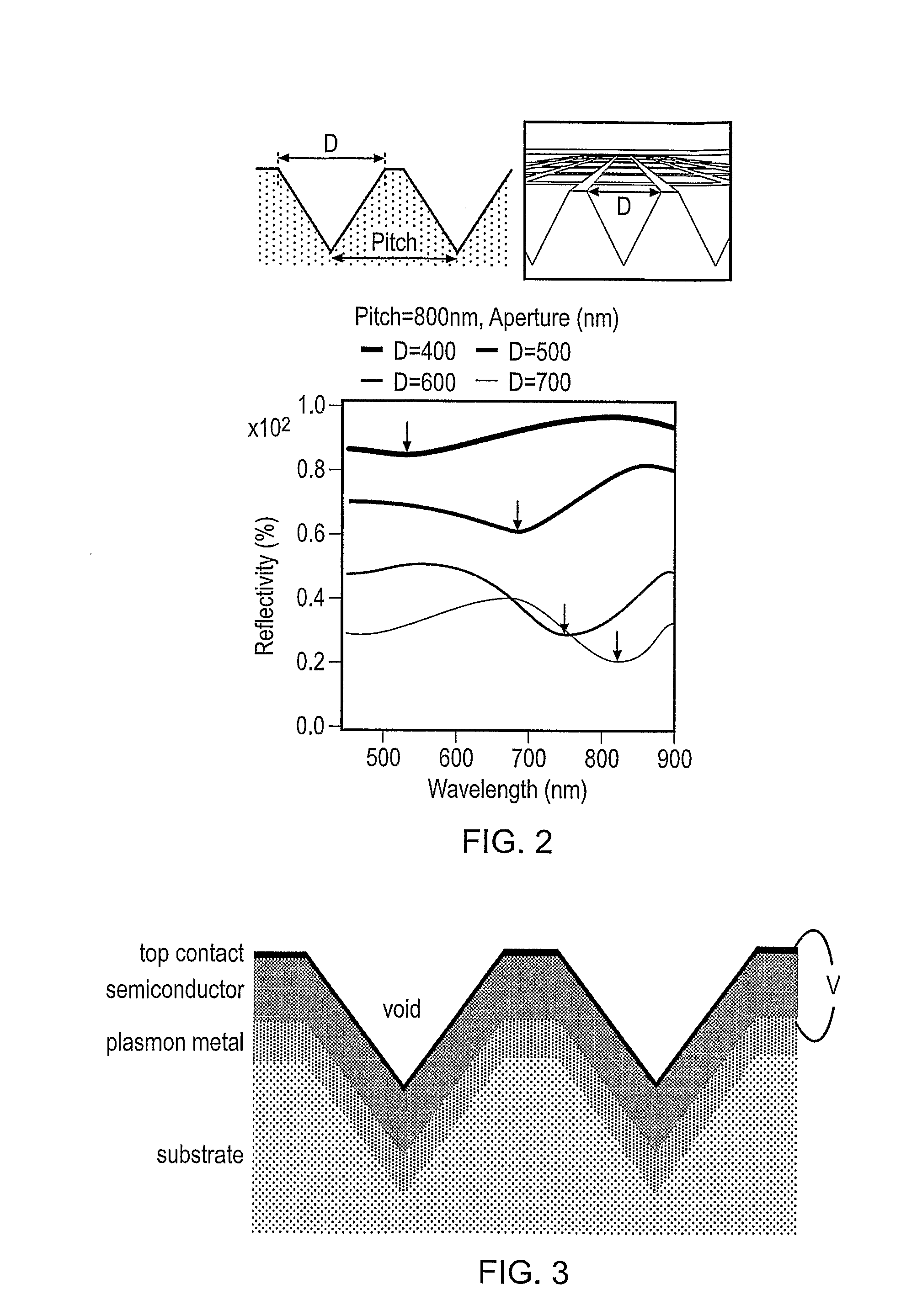Plasmon-enhanced photo voltaic cell
a photovoltaic cell, plasmon technology, applied in the direction of electrical apparatus, semiconductor/solid-state device manufacturing, semiconductor devices, etc., can solve the problems of reducing the lifetime below 5 years, % efficiencies, and low efficiency of photovoltaic technology, so as to enhance the electron hole production in the semiconductor, high optical intensity, and high efficiency
- Summary
- Abstract
- Description
- Claims
- Application Information
AI Technical Summary
Benefits of technology
Problems solved by technology
Method used
Image
Examples
Embodiment Construction
[0023]The novel feature of the solar cell in this patent is the metallic void geometry which is coated with the active absorbing layer embedded in a semiconductor and a top contact. The interface between the doped semiconductor and metal forms a high electric field (Schottky) region (FIG. 1). However normally, because of the interference between incident and reflected light rays, there would be no optical intensity within this high electric field region above a metal. In our structures, the nanostructure plasmon geometry allows strong optical intensity at the surface of the metal, thus generating electron-hole pairs in the place where they can be most easily separated and transported into the contacts.
[0024]Unlike a Grätzel electrochemical cell, this device needs no ion transport layers, but uses the heavily doped as-grown semiconductor to transport electrons to the top contact—this is likely to give better lifetime as ion-transport layers can degrade as often problematic in a batte...
PUM
| Property | Measurement | Unit |
|---|---|---|
| depletion length | aaaaa | aaaaa |
| depletion length | aaaaa | aaaaa |
| diameter | aaaaa | aaaaa |
Abstract
Description
Claims
Application Information
 Login to View More
Login to View More - R&D
- Intellectual Property
- Life Sciences
- Materials
- Tech Scout
- Unparalleled Data Quality
- Higher Quality Content
- 60% Fewer Hallucinations
Browse by: Latest US Patents, China's latest patents, Technical Efficacy Thesaurus, Application Domain, Technology Topic, Popular Technical Reports.
© 2025 PatSnap. All rights reserved.Legal|Privacy policy|Modern Slavery Act Transparency Statement|Sitemap|About US| Contact US: help@patsnap.com



